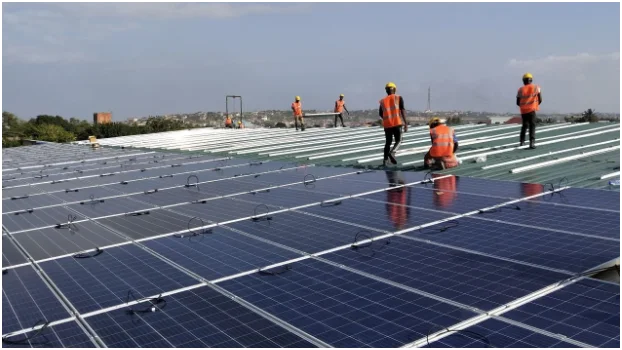How Starlink Supports IoT-Based Remote Monitoring in Remote and Off-Grid Sites

Remote and off-grid environments have always posed significant challenges for organizations that depend on real-time data, consistent connectivity, and automated monitoring. Whether it’s environmental research stations, mining operations, agricultural sites, disaster-response zones, or humanitarian relief camps, traditional connectivity options often fail to deliver the speed, coverage, and reliability needed to keep Internet of Things (IoT) systems running smoothly. This is where Starlink’s advanced satellite technology brings transformative potential.
Today, starlink for remote monitoring systems is becoming one of the most efficient solutions for organizations and NGOs looking to power their IoT devices and critical monitoring infrastructure in isolated regions. Its low-Earth-orbit (LEO) satellite network is reshaping how remote facilities access the internet—offering high-speed, low-latency, and globally available connectivity where traditional networks do not exist.
In this article, we explore how Starlink empowers IoT-based monitoring, why NGOs and field-based organizations benefit, and how it compares to conventional satellite solutions.
Why Remote Monitoring Systems Need Strong Connectivity
IoT-based monitoring systems rely on sensors, control units, edge devices, and gateways that constantly collect and transmit data. Common use cases include:
- Monitoring environmental data such as temperature, humidity, air quality, or water levels
- Tracking heavy equipment, fuel consumption, and asset movement
- Supervising agricultural operations like irrigation, soil conditions, and livestock health
- Field-level surveillance, perimeter monitoring, and security alerts
- Humanitarian response operations—monitoring refugee camps, medical sites, and logistics centers
However, all these systems need stable connectivity to send data back to central dashboards or cloud servers. Poor, intermittent, or delayed connectivity can lead to:
- Data loss
- Delayed decision-making
- Operational inefficiencies
- Increased field visits to physically check sensors
- Higher costs and safety risks
This is why organizations are turning to starlink for remote monitoring systems—because its connectivity model directly addresses these challenges.
How Starlink Transforms IoT Connectivity in Remote Sites
1. Low-Latency Connectivity Enables Real-Time Data Transfers
Traditional satellite internet uses geostationary satellites positioned about 36,000 km from Earth, often resulting in high latency (600–900+ ms). Starlink’s LEO satellites operate at just 550 km, providing latency as low as 20–40 ms.
This low latency allows:
- Real-time visibility of sensor data
- Instant alerts and alarms
- Smooth integration with cloud-based dashboards
- Reliable performance for time-critical monitoring
For remote mining, oil and gas, agriculture, and environmental monitoring, low-latency connectivity significantly improves operational speed and safety.
2. High Bandwidth for Sensor Networks with Heavy Data Loads
Modern IoT systems often include video feeds, high-resolution cameras, drones, and large sensor arrays—each generating significant data. Starlink offers bandwidth that far exceeds traditional satellite solutions.
Its typical download speeds range from 50–200 Mbps (sometimes higher depending on the region), which is more than enough for:
- Large sensor deployments
- Video-based monitoring
- Remote-control operations
- Cloud analytics and AI-powered dashboards
This makes Starlink a powerful backbone for complex IoT ecosystems.
3. Simple Setup for Rapid Deployments
One of the biggest advantages of Starlink in off-grid applications is its ease of deployment. The user terminal is compact, portable, and designed for quick installation—ideal for fast-moving operations like:
- Disaster relief camps
- Field research missions
- Construction sites
- Wildlife monitoring projects
Organizations using satellite internet for NGOs especially benefit, as teams quickly set up reliable communication without needing local infrastructure, fiber availability, or network towers.
4. Reliable Connectivity in Harsh Environments
Starlink hardware is engineered to function in extreme weather and rugged terrains, making it suitable for sites where traditional infrastructure repeatedly fails. It withstands:
- High temperatures
- Desert dust and sand
- Heavy rain and storms
- Snow and strong winds
This reliability ensures uninterrupted data flow, which is critical for monitoring systems that support safety, environmental protection, and mission-critical operations.
Why Starlink Is a Game-Changer for NGOs
NGOs often operate in the world’s most challenging environments—regions affected by conflict, climate disasters, displacement, food insecurity, or lack of infrastructure. Here’s how Starlink supports them:
1. Fast Internet Anywhere, Without Dependency on Local Networks
Many humanitarian projects take place where fiber, mobile coverage, or ISP services are non-existent. Starlink’s global footprint enables connectivity in places that were previously unreachable.
This is a massive advantage for organizations adopting satellite internet for NGOs to support operations such as:
- Remote medical clinics
- Food distribution centers
- Refugee camps
- Emergency response hubs
2. Supports IoT for Humanitarian and Environmental Monitoring
NGOs increasingly use IoT for:
- Tracking water resource levels
- Monitoring solar installations
- Supervising cold storage for medical supplies
- Ensuring safety in temporary settlements
- Gathering climate and environmental data
Starlink ensures these devices stay connected around the clock.
3. Reduces Operational Costs and Field Visits
With Starlink-powered IoT systems, teams can monitor assets and environments remotely—reducing the need for expensive and risky field visits. This lowers costs and increases safety for field workers.
4. Improves Transparency and Reporting
NGOs need proper data recording for audits, donor reporting, and compliance. Reliable data connectivity makes IoT reporting more accurate and real-time, improving trust and operational efficiency.
Examples of Starlink-Powered Remote Monitoring Use Cases
- Agriculture: soil moisture monitoring, smart irrigation, livestock tracking
- Mining & Oil Fields: equipment health monitoring, fuel tracking, site surveillance
- Forestry & Wildlife: trackers, environmental logging, anti-poaching sensors
- Energy: remote solar and wind farm management
- Disaster Management: damage assessment, water supply monitoring, temporary camps
- NGO Operations: medical cold-chain management, logistics tracking, food distribution monitoring
In each scenario, starlink for remote monitoring systems becomes a dependable connectivity backbone.
Conclusion
IoT-driven remote monitoring is essential for modern industries and humanitarian operations—but without reliable internet, even the best sensors and systems fall short. Starlink solves this challenge by providing high-speed, low-latency, globally available connectivity designed for rugged, isolated environments.
From NGOs deploying life-saving operations to industries managing valuable assets in remote regions, Starlink is redefining the possibilities of IoT in areas where traditional internet was never an option.
If you’re looking for a powerful, flexible, and highly reliable solution to support remote monitoring, Starlink stands out as one of the most effective choices today.

Retail Banking Solutions: A Roadmap for Community Banks to Scale Securely

Essential Tips for Small Business Liability Protection

Best Tips and Tricks for Bitcoin Investments

Onsite Tire Change in Ottawa : Safe Fast & Professional Tire Services

Accelerating drug discovery through the DEL-ML-CS approach

Why Combining Technical SEO and AI Optimization Delivers Better Results

Digital Vehicle Inspection Software: The Most Effective Upgrade for Your Shop

Designing Your Workflow: Tailoring a CRM to Engineering Project Management








